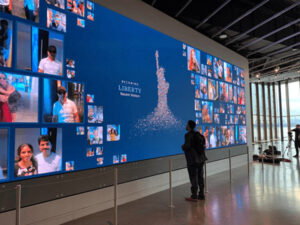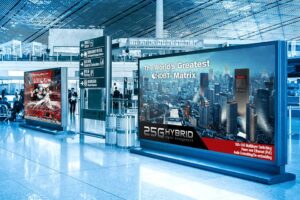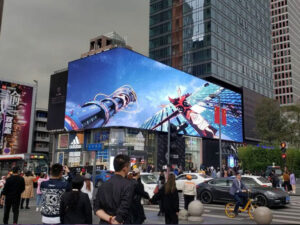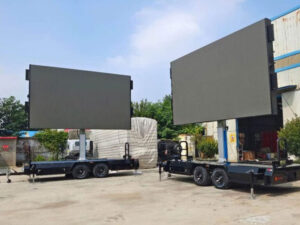MNK DIGITAL

Indoor and outdoor LED displays are designed to meet the specific challenges and requirements of their respective environments. Here are some key differences between indoor and outdoor LED displays:
- Brightness:
- Indoor Displays: Typically have lower brightness levels compared to outdoor displays. Higher brightness is not necessary indoors where ambient light conditions are controlled.
- Outdoor Displays: Require higher brightness to overcome direct sunlight and other ambient light sources, ensuring visibility in various lighting conditions.
- Weather Resistance:
- Indoor Displays: Generally not designed to withstand exposure to the elements, as they are installed in controlled indoor environments.
- Outdoor Displays: Built to be weather-resistant, with features like waterproof and dustproof enclosures to protect against rain, snow, and other environmental factors.
- Pixel Pitch:
- Indoor Displays: Often have smaller pixel pitches, providing higher resolution and image quality for close viewing distances.
- Outdoor Displays: Can have larger pixel pitches since they are typically viewed from greater distances. This helps balance resolution with the practicalities of outdoor installations.
- Enclosure Design:
- Indoor Displays: Enclosures may prioritize aesthetics and may not require the same level of protection against environmental factors.
- Outdoor Displays: Enclosures are robust and designed to protect the display from weather, temperature fluctuations, and potential vandalism.
- Cooling Systems:
- Indoor Displays: Cooling requirements are generally lower, and displays may rely on simple ventilation systems.
- Outdoor Displays: Require more sophisticated cooling systems to manage heat generated by the display, especially in direct sunlight.
- Viewing Angles:
- Indoor Displays: Viewing angles are important, but the displays do not need to contend with direct sunlight, allowing for more flexibility in viewing angle specifications.
- Outdoor Displays: Need wider viewing angles to accommodate viewers from various positions and angles, especially considering outdoor installations where people may be dispersed.
- Cost:
- Indoor Displays: Typically more cost-effective due to fewer environmental challenges and lower brightness requirements.
- Outdoor Displays: Tend to be more expensive due to the need for higher brightness, weather resistance, and additional features.
- Energy Efficiency:
- Indoor Displays: Generally have lower power requirements compared to outdoor displays.
- Outdoor Displays: May require higher power consumption, especially in situations where high brightness is crucial for visibility in bright sunlight.
- Look for a display with a user-friendly content management system that allows easy updating and scheduling of content. This is important for keeping your promotions and advertisements current.
Choosing between indoor and outdoor LED displays depends on the specific application, environmental conditions, and budget considerations. Selecting the right type ensures optimal performance and longevity for the display in its intended environment.
SMD Screen , Video wall in Pakistan, LED Signage Display, Indoor Screen, SMD LED Screen in Pakistan, SMD Screen price in Pakistan, SMD LED Screen Price in Pakistan, Rental SMD Screen, SMD Screen in Pakistan





